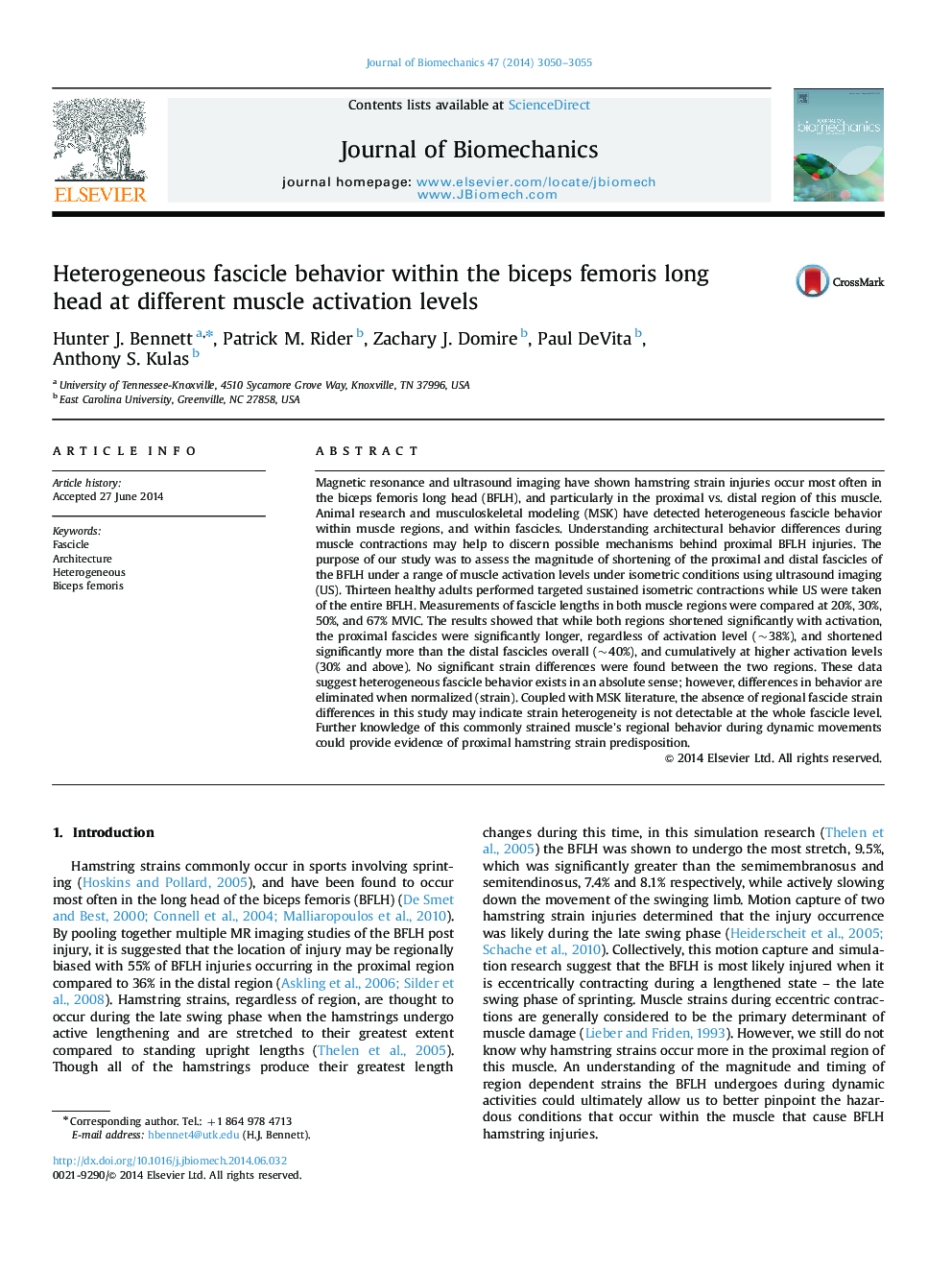| کد مقاله | کد نشریه | سال انتشار | مقاله انگلیسی | نسخه تمام متن |
|---|---|---|---|---|
| 10432120 | 910236 | 2014 | 6 صفحه PDF | دانلود رایگان |
عنوان انگلیسی مقاله ISI
Heterogeneous fascicle behavior within the biceps femoris long head at different muscle activation levels
ترجمه فارسی عنوان
رفتار فاکتوریل هتروزانه در دوزهای دو طرفه فمورهای طولانی در سطوح مختلف فعال سازی عضلات
دانلود مقاله + سفارش ترجمه
دانلود مقاله ISI انگلیسی
رایگان برای ایرانیان
موضوعات مرتبط
مهندسی و علوم پایه
سایر رشته های مهندسی
مهندسی پزشکی
چکیده انگلیسی
Magnetic resonance and ultrasound imaging have shown hamstring strain injuries occur most often in the biceps femoris long head (BFLH), and particularly in the proximal vs. distal region of this muscle. Animal research and musculoskeletal modeling (MSK) have detected heterogeneous fascicle behavior within muscle regions, and within fascicles. Understanding architectural behavior differences during muscle contractions may help to discern possible mechanisms behind proximal BFLH injuries. The purpose of our study was to assess the magnitude of shortening of the proximal and distal fascicles of the BFLH under a range of muscle activation levels under isometric conditions using ultrasound imaging (US). Thirteen healthy adults performed targeted sustained isometric contractions while US were taken of the entire BFLH. Measurements of fascicle lengths in both muscle regions were compared at 20%, 30%, 50%, and 67% MVIC. The results showed that while both regions shortened significantly with activation, the proximal fascicles were significantly longer, regardless of activation level (~38%), and shortened significantly more than the distal fascicles overall (~40%), and cumulatively at higher activation levels (30% and above). No significant strain differences were found between the two regions. These data suggest heterogeneous fascicle behavior exists in an absolute sense; however, differences in behavior are eliminated when normalized (strain). Coupled with MSK literature, the absence of regional fascicle strain differences in this study may indicate strain heterogeneity is not detectable at the whole fascicle level. Further knowledge of this commonly strained muscle׳s regional behavior during dynamic movements could provide evidence of proximal hamstring strain predisposition.
ناشر
Database: Elsevier - ScienceDirect (ساینس دایرکت)
Journal: Journal of Biomechanics - Volume 47, Issue 12, 22 September 2014, Pages 3050-3055
Journal: Journal of Biomechanics - Volume 47, Issue 12, 22 September 2014, Pages 3050-3055
نویسندگان
Hunter J. Bennett, Patrick M. Rider, Zachary J. Domire, Paul DeVita, Anthony S. Kulas,
